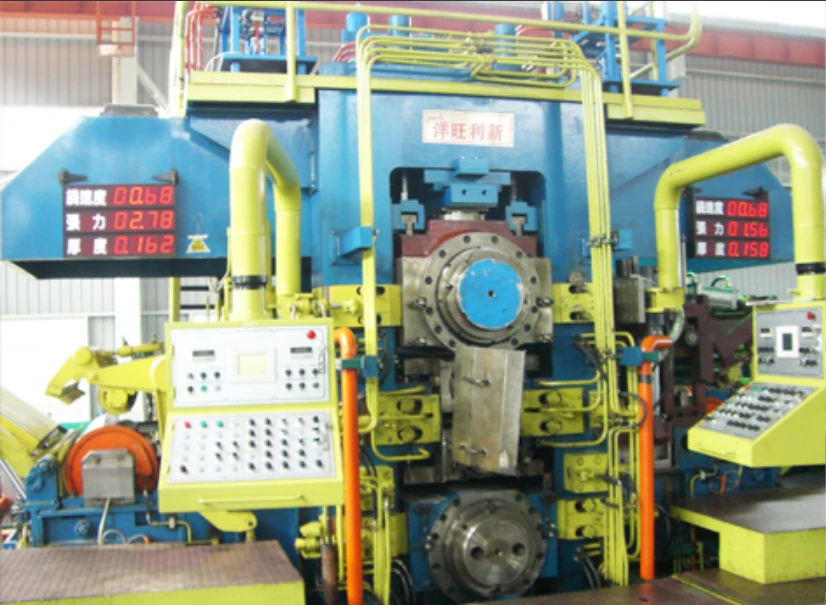
Temper Rolling Mill | Precision Flatness & Surface Quality
A reporter’s take: what a modern temper rolling mill really does on the shop floor
If you’ve ever watched a coil line hum at 300+ m/min, you know the magic isn’t just hot rolling or pickling—it’s the skin-pass stand that quietly fixes shape, surface, and feel. To be honest, that’s where a lot of downstream headaches disappear. A good temper rolling mill (also called a skin-pass mill) eliminates yield point elongation marks, nudges roughness into spec, and gives you that stable formability automotive stampers keep texting about late at night.

What’s changing in the market
Trends I keep hearing from plant managers: tighter flatness tolerance on AHSS, higher Ra control for coating lines, and smarter AGC/AFC loops tied to inline roughness metering. Sustainability is creeping in too—energy-optimized drives and hydraulic systems that cut idle losses. Surprisingly, many customers say the winning feature is not raw power but consistency under mixed coil schedules.
How it works (process flow in simple steps)
- Materials: low-carbon cold rolled, IF steel, tinplate base, stainless 200/300 series, and sometimes aluminum.
- Entry: tension bridles stabilize; coil data loads (thickness, grade, target Ra/flatness).
- Skin-pass: 4-high stand, small soft reduction ≈0.5–2.0% elongation to erase yield terrace and tune mechanical properties.
- Surface: work-roll texturing (EDT/shot blast) sets Ra/Rz; roughness adjusted via roll change or variable pressure.
- Shape control: AFC, roll bending, and thermal balance keep I-units in spec; flatness measured inline.
- Inspection and test: thickness via X-ray/laser; flatness to ASTM A568; roughness per ISO 4287/4288 or EN 10049; mechanicals by tensile sampling.
- Exit: recoiling and marking; data logged for traceability (ISO 9001 systems).
Typical specs (real-world values)
| Mill type | 4-high, hydraulic AGC + AFC |
| Thickness range | 0.15–3.0 mm (≈, grade-dependent) |
| Max strip width | 1,250–1,650 mm options |
| Skin-pass elongation | 0.5–2.0% typical; soft reduction capability |
| Line speed | Up to ≈ 350 m/min (coil grade/width dependent) |
| Roughness control | Ra 0.4–2.5 µm via EDT rolls (ISO 4287) |
| Flatness | Meets ASTM A568 tolerances; inline I-unit feedback |
From the Beijing shop floor, the temper rolling mill offering at No.1518, LAR Valley Int’l, Guang’anmen Avenue, Xicheng, Beijing, focuses on four things customers actually notice: removing yield terrace, improving deep draw ability, dialing in surface cleanliness/roughness, and subtle thickness/strength tweaks via soft reduction.
Applications and industries
Automotive exposed panels, home appliance skins, tinplate for food cans, construction cladding, and electrical enclosures. In coating lines, a stable temper rolling mill upstream makes paint bake curves behave and cuts rework.
Customization options
- Work-roll textures: EDT patterns for specific Ra/Rsk targets.
- AHSS packages: enhanced coolant control, roll bending, anti-chatter.
- Automation: interface to Level 2/3, coil recipe libraries, traceability to ISO 9001.
- Energy: high-efficiency drives, hydraulic accumulator sizing for lower peak demand.
Vendor snapshot (customers keep asking this)
| Vendor | Core spec | Max width | Skin-pass range | Certs | After-sales |
|---|---|---|---|---|---|
| Temper Mill (Beijing, CN) | 4-high AGC/AFC, soft reduction | ≈ 1,650 mm | 0.5–2.0% | ISO 9001, ISO 14001 | Onsite commissioning + remote |
| International Vendor A | 4/6-high options, advanced Level 2 | 1,880 mm | 0.3–2.5% | ISO 9001, CE | Global spares network |
| Regional Vendor B | 4-high, basic AGC | 1,450 mm | 0.6–1.5% | ISO 9001 | Regional service only |
Service life and maintenance
Work rolls: 12–18 months between regrinds (usage-dependent). Bearings: ≈30,000–40,000 h with proper lubrication. Common checks: roughness calibration weekly, flatness sensor verification monthly, safety audits quarterly. Real-world use may vary with coil cleanliness and operator practice.
Mini case notes and feedback
- Automotive supplier (Mexico): cut stretcher-strain complaints by 90% after installing a temper rolling mill with EDT Ra 1.2 µm; panel scrap fell from 2.1% to 0.7% in 8 weeks.
- Appliance plant (Turkey): flatness I-units halved on 0.6 mm IF steel; paint-line fisheyes decreased thanks to cleaner strip surfaces.
- Tinplate line (Vietnam): soft reduction improved thickness uniformity; canmakers reported smoother draw-and-iron runs.
Standards followed: ASTM A568/A568M for sheet tolerances, EN 10130 for low-carbon cold rolled, JIS G 3141 for general CR steel, ISO 4287/4288 for roughness. Certifications typically include ISO 9001 and ISO 14001. I guess that’s the boring part—but it matters when audits knock.
References
- ASTM A568/A568M – Standard Specification for Steel, Sheet, Carbon, Structural, and High-Strength, Low-Alloy.
- EN 10130 – Cold rolled low carbon steel flat products for cold forming.
- ISO 4287/4288 – Geometrical product specifications (GPS): Surface texture.
- ISO 9001:2015 – Quality management systems; ISO 14001:2015 – Environmental management systems.
-
YWLX’s 1450mm Six-Hi Reversing Mill Goes Live in BangladeshNewsNov.24,2025
-
Adjusting Roll Gap in 6Hi Reversing Cold Rolling Mill for Thin StripNewsNov.13,2025
-
Quality Control Standards for Automatic Gauge Control in Strip RollingNewsNov.13,2025
-
Effect of Skin Pass Rolling on Metal DuctilityNewsNov.13,2025
-
Key Components of a Modern TempermillNewsNov.13,2025
-
Common Wear Patterns of Work Roll in Tandem Cold Mill OperationsNewsNov.13,2025
-
Revolutionary Skin Pass Rolling Technology for Enhanced Steel QualityNewsNov.04,2025










